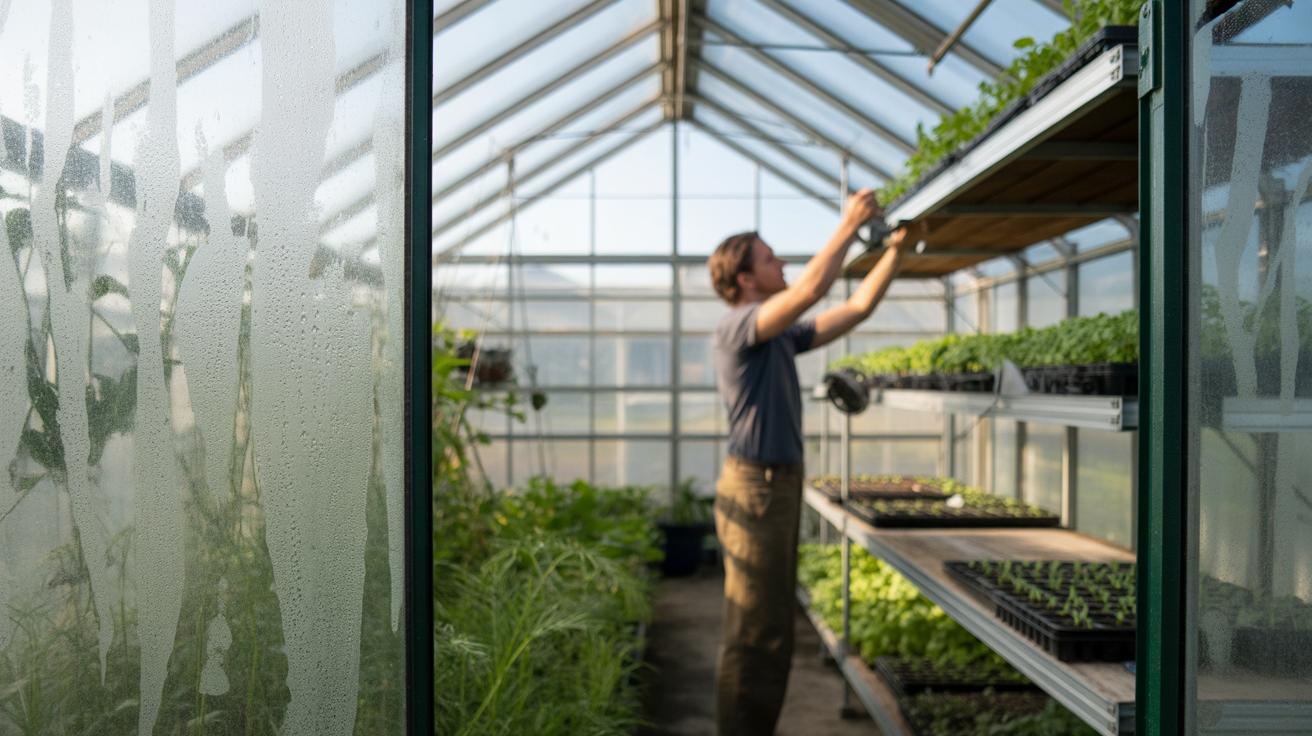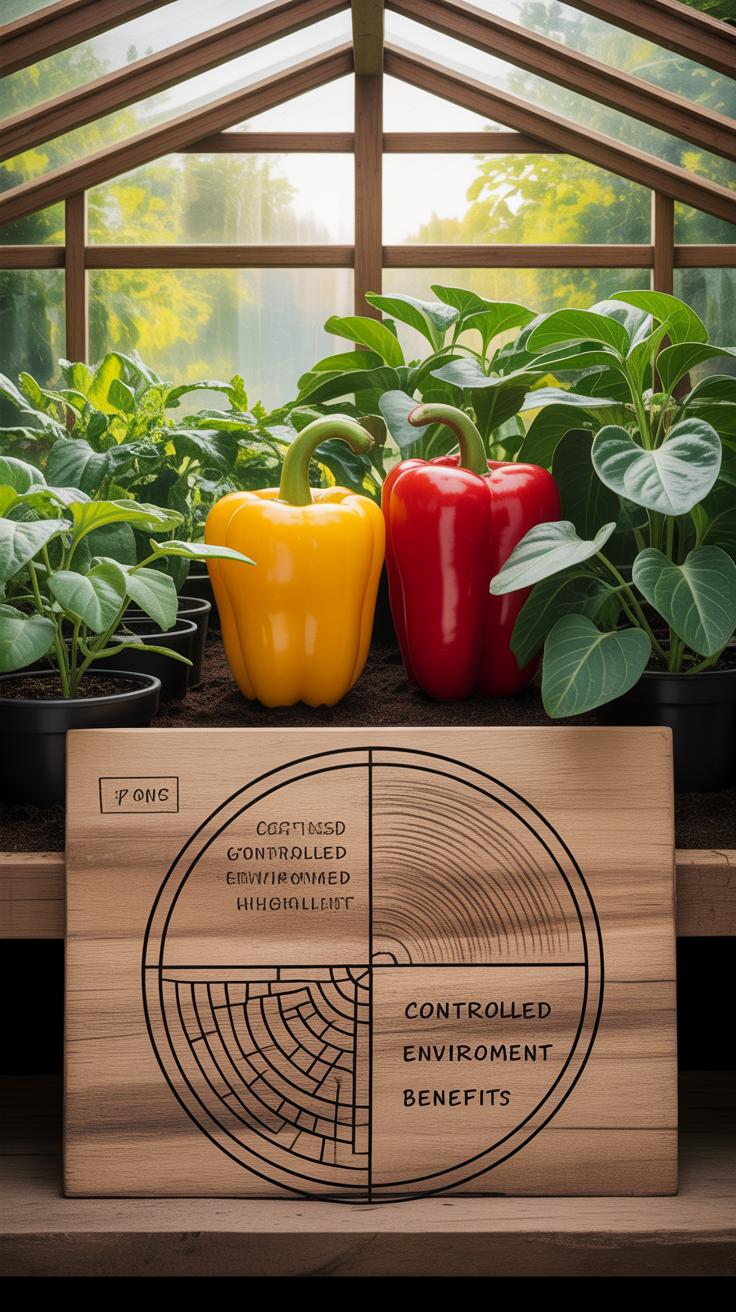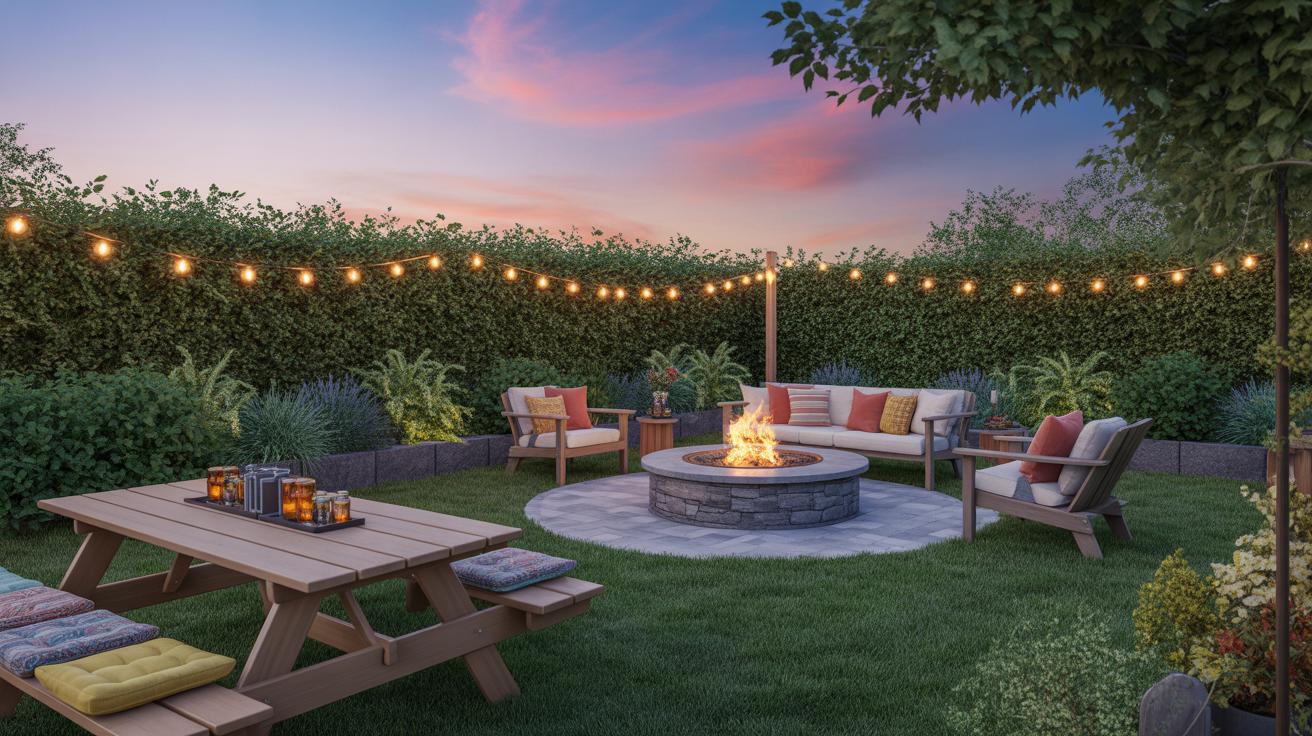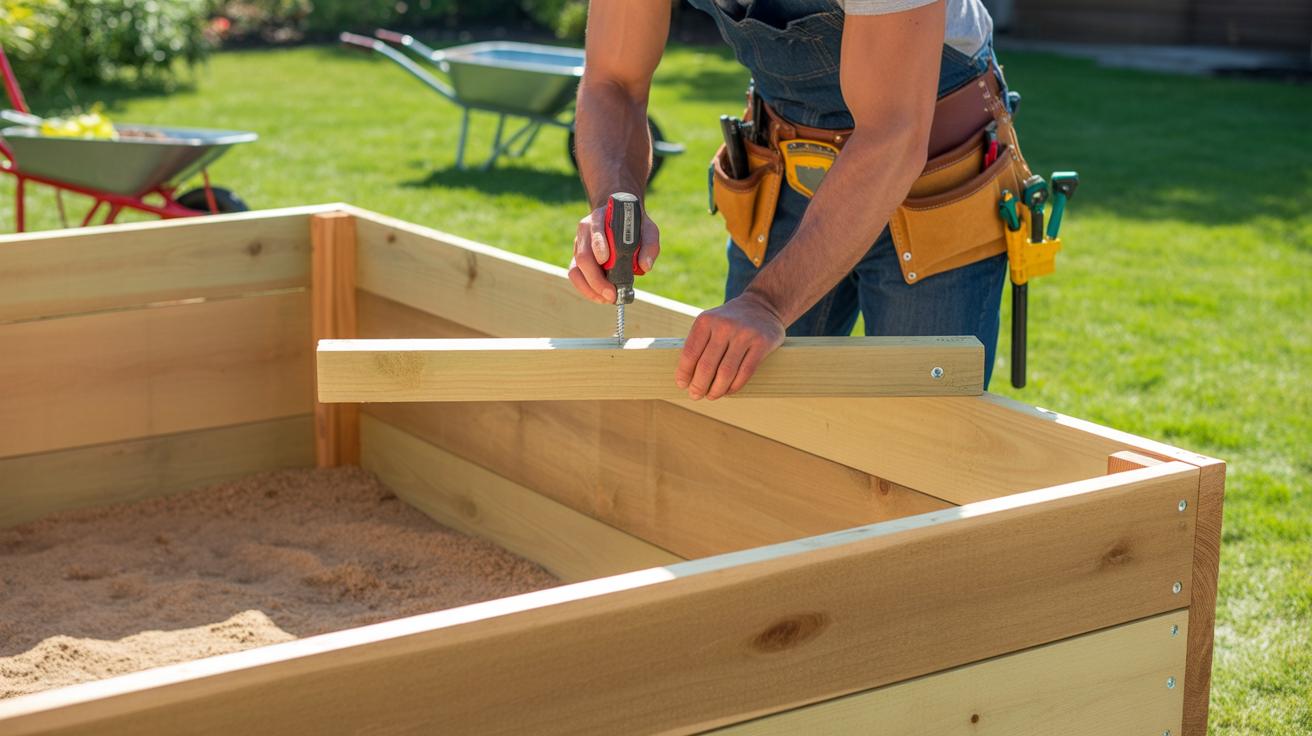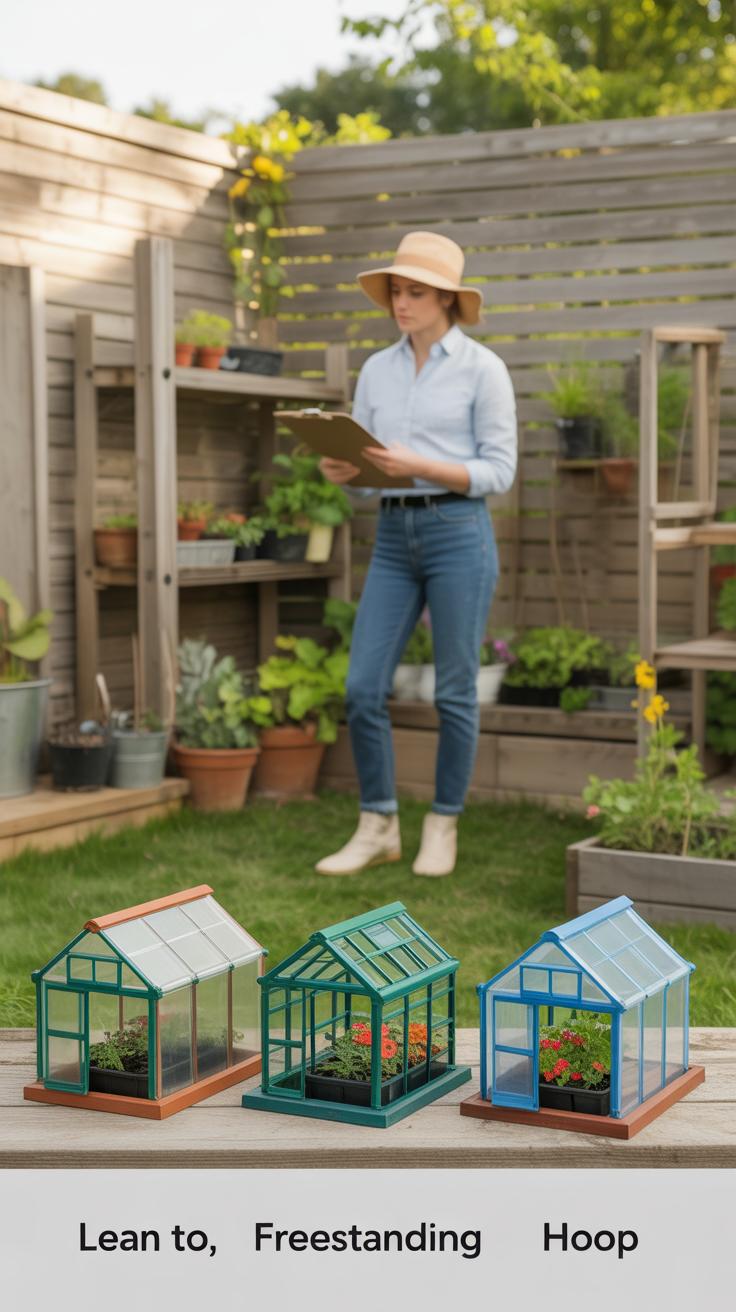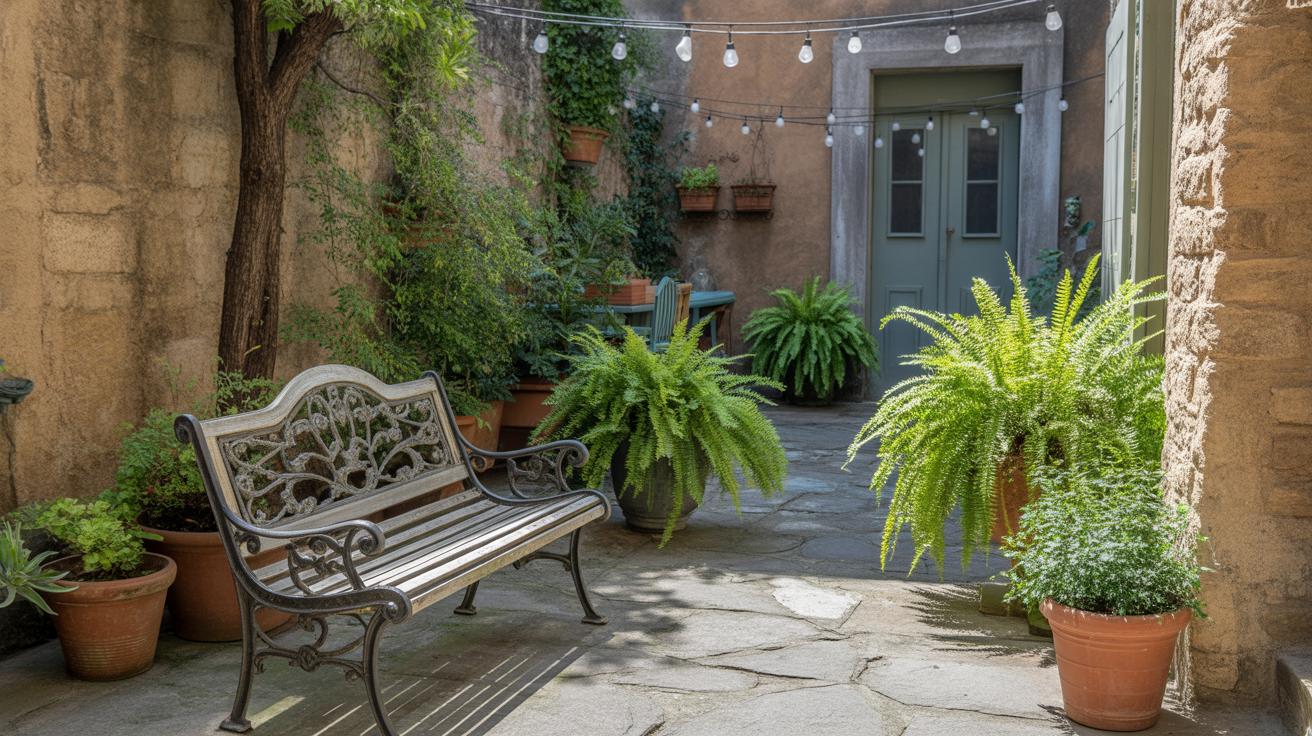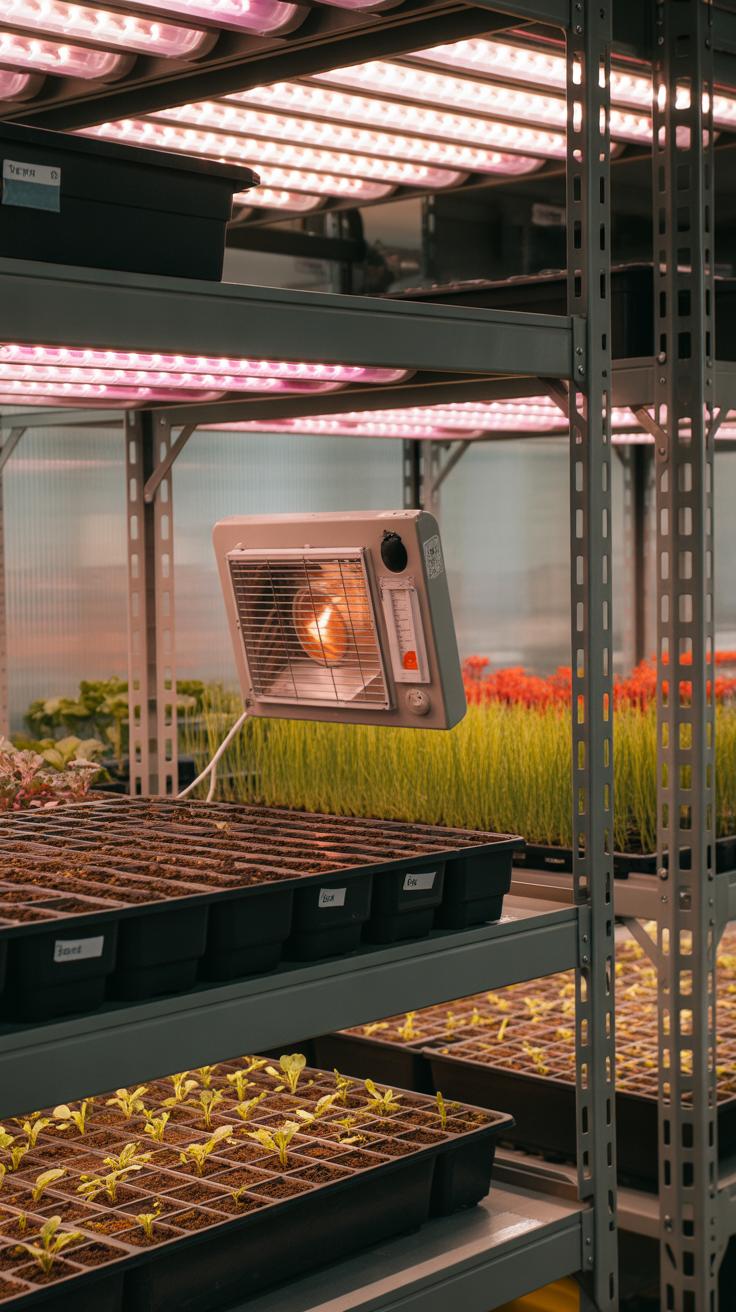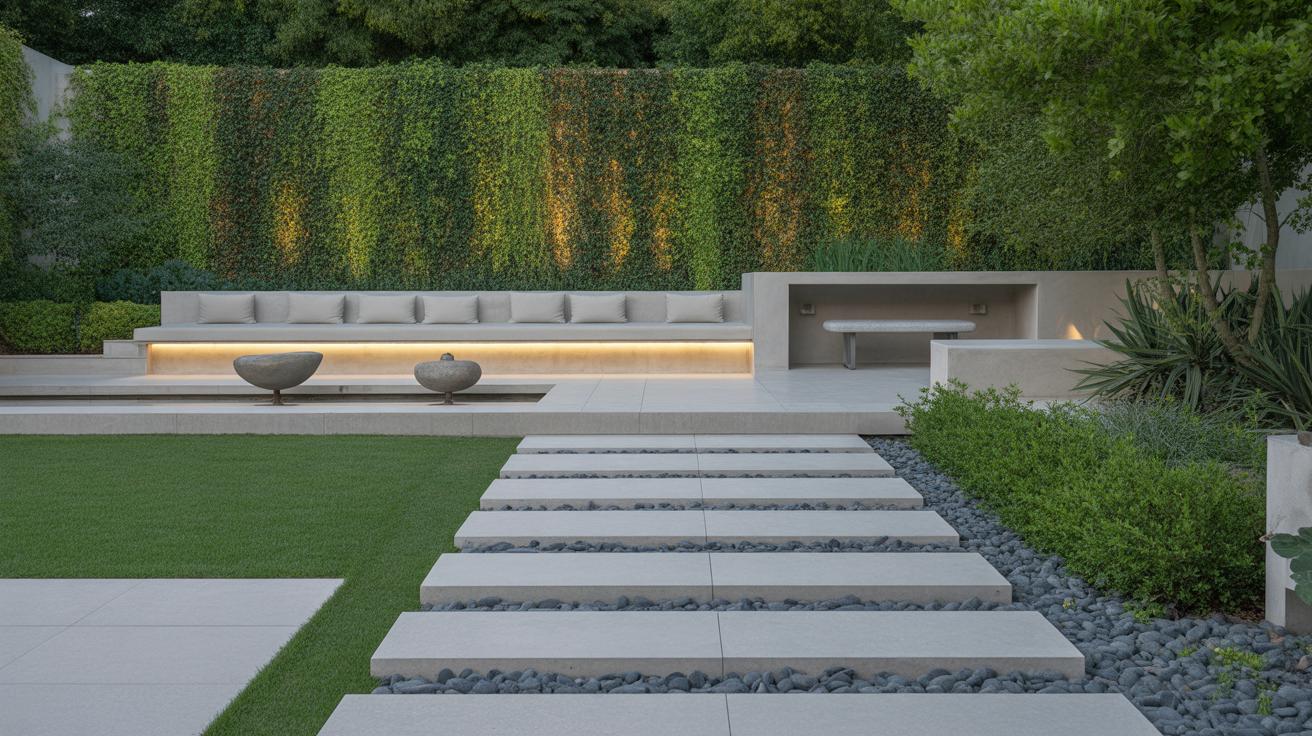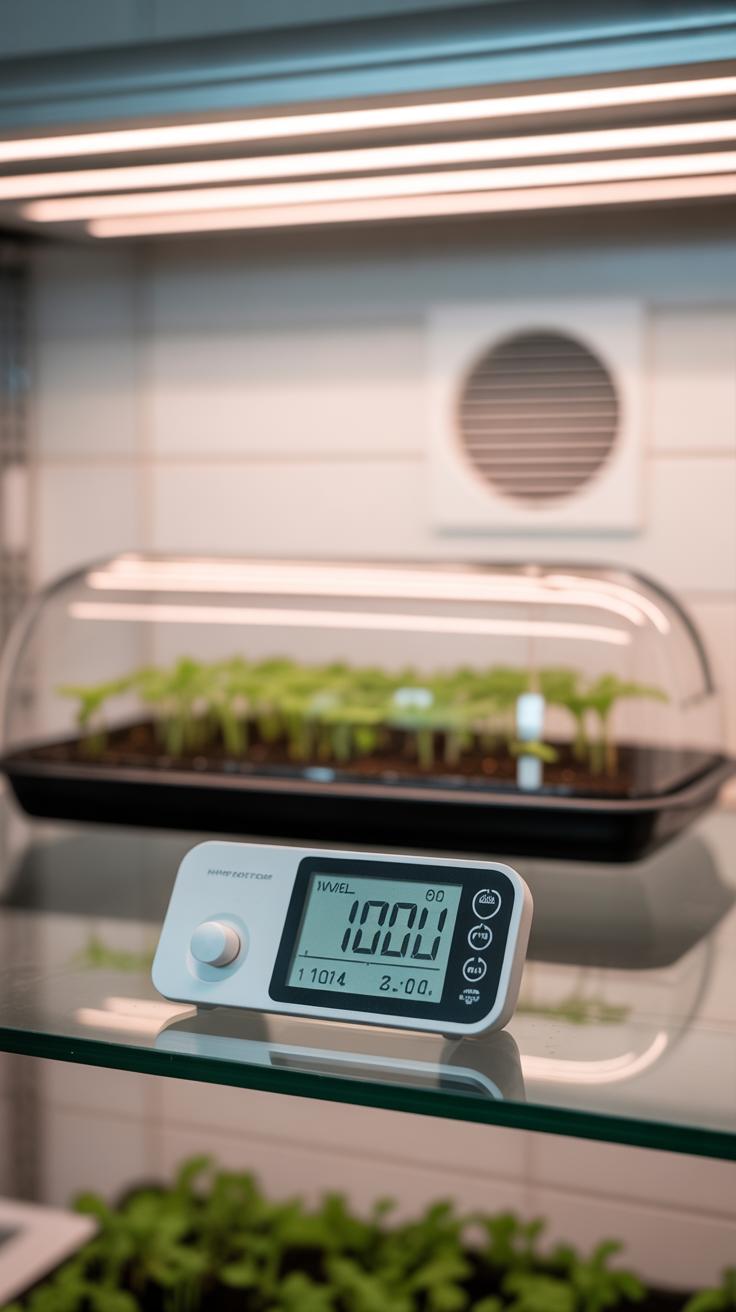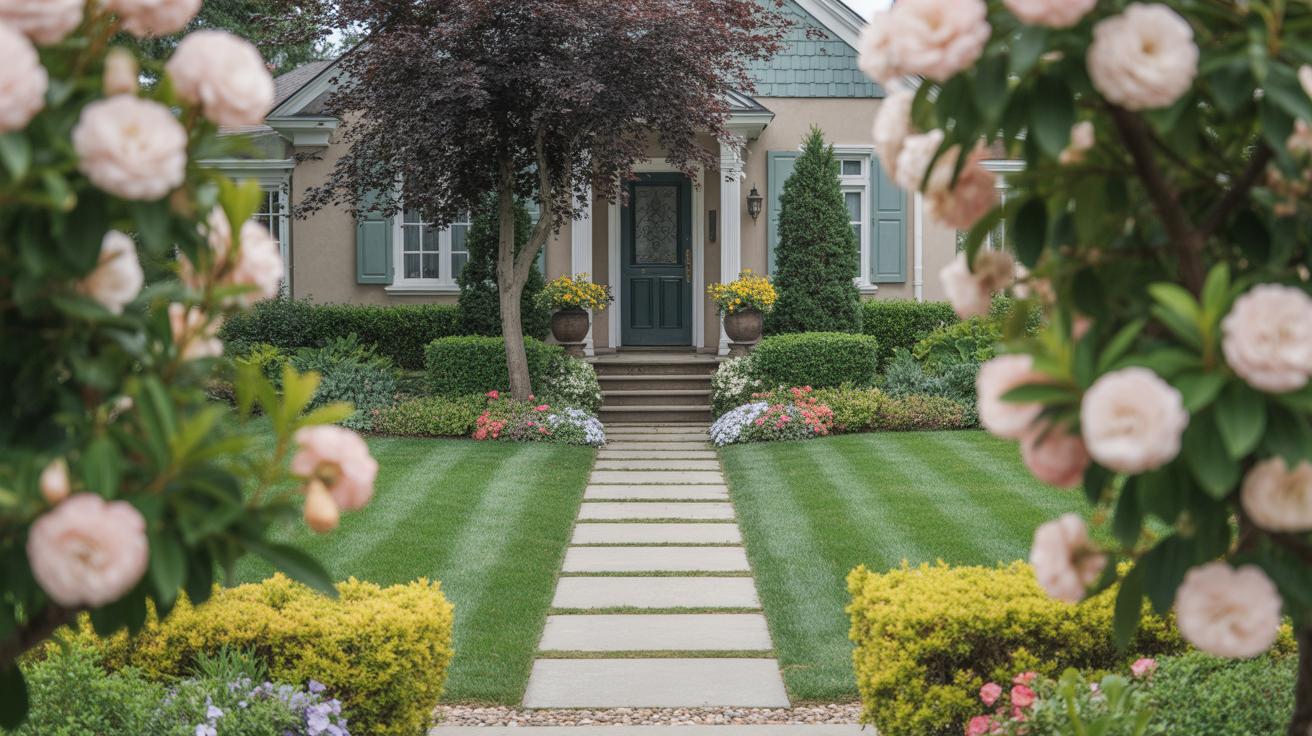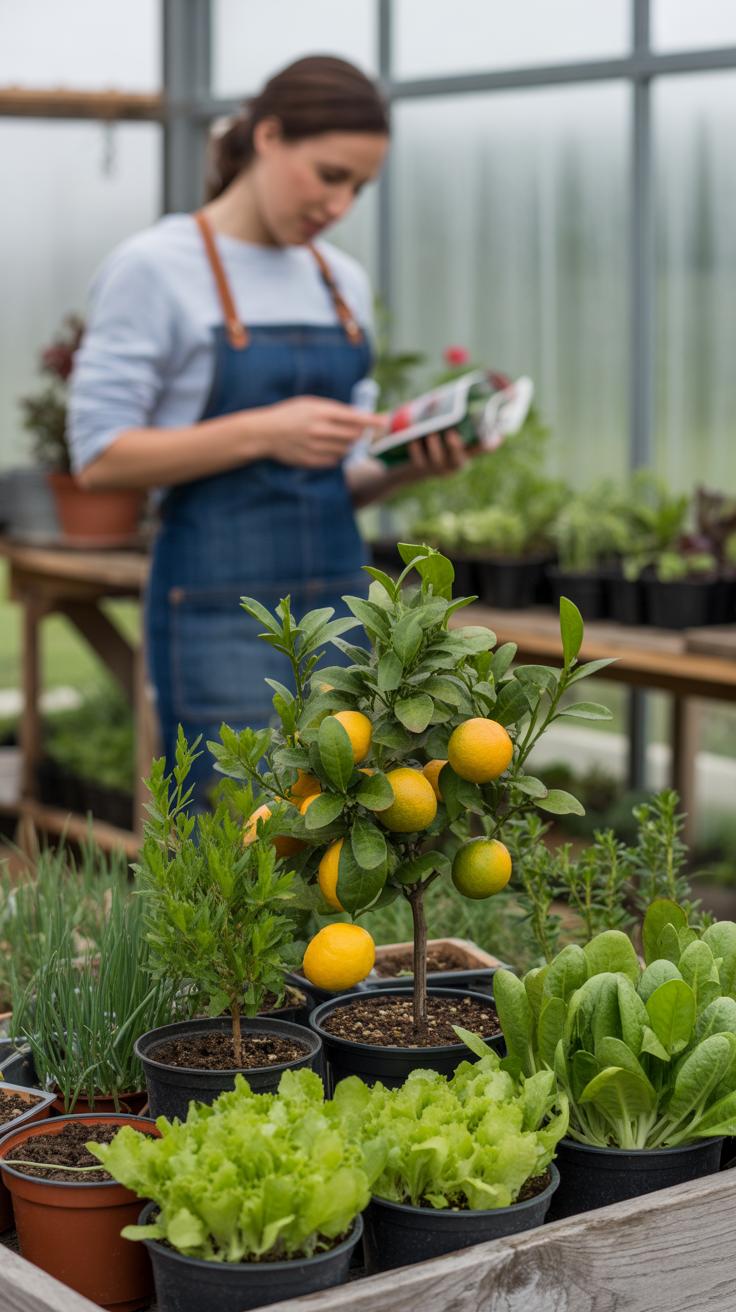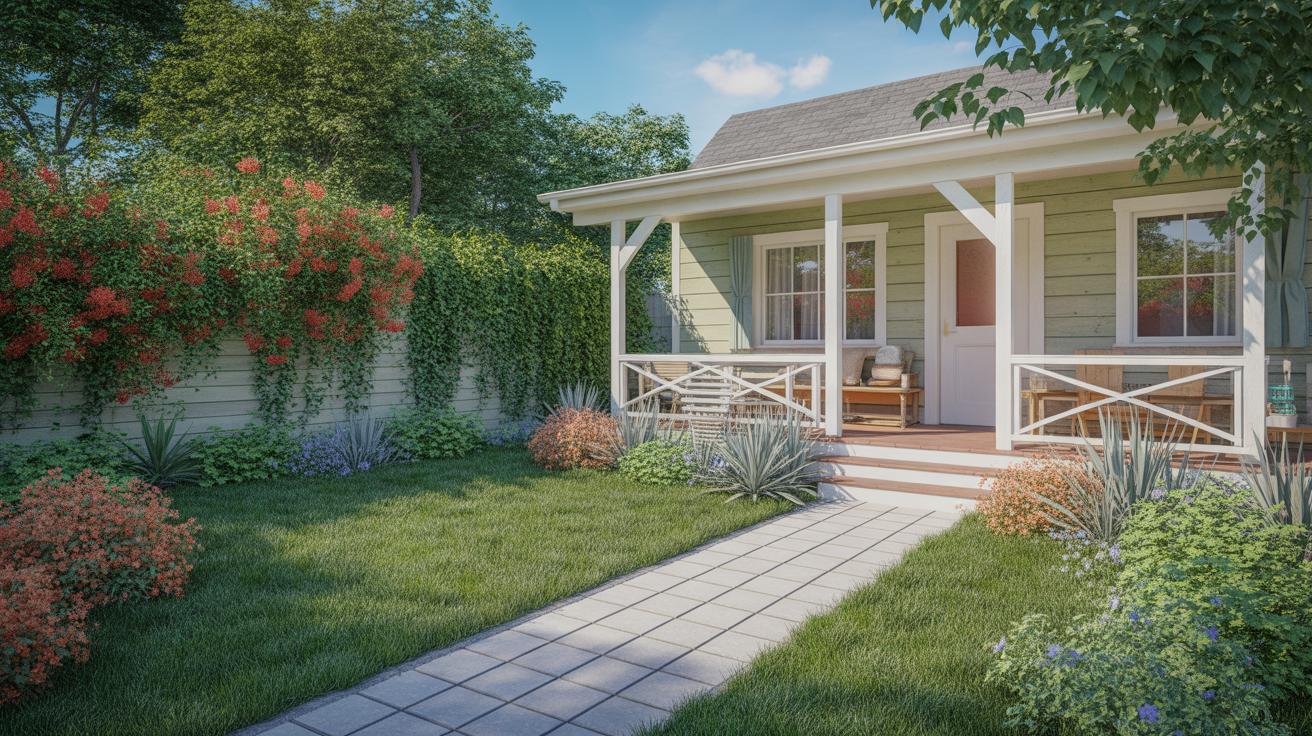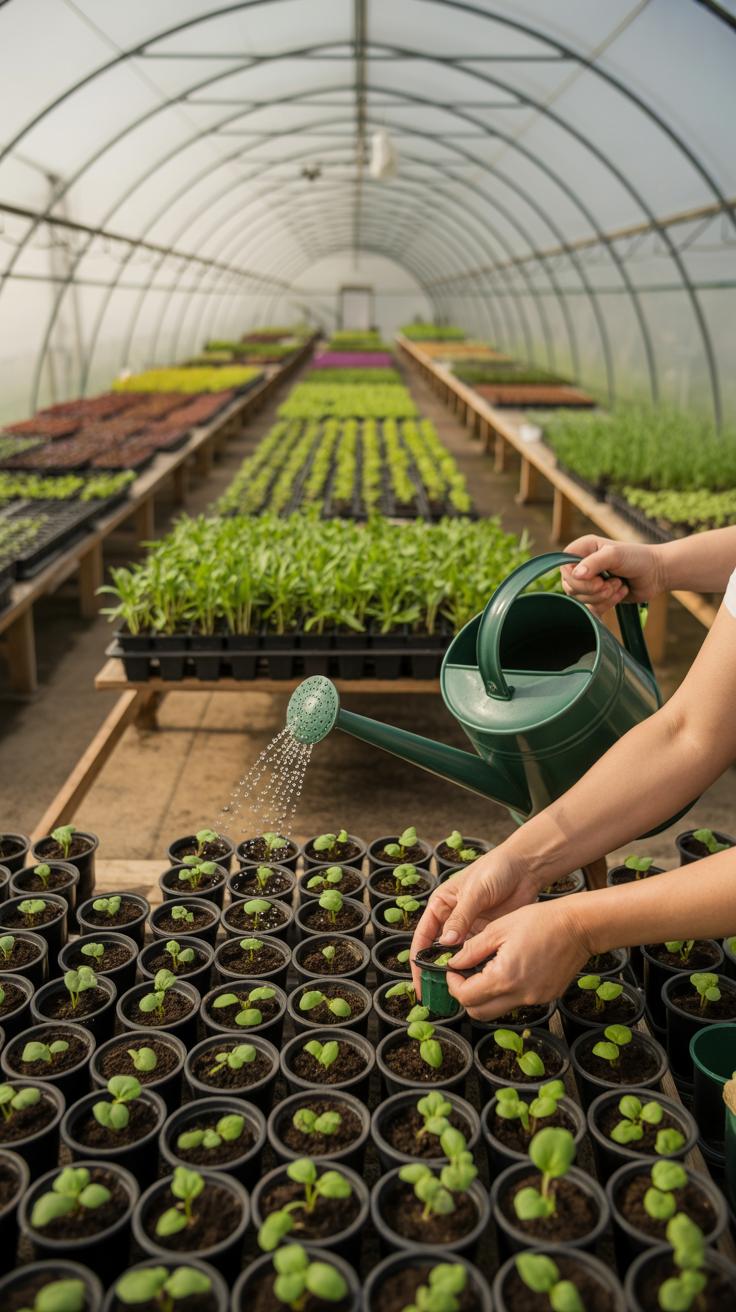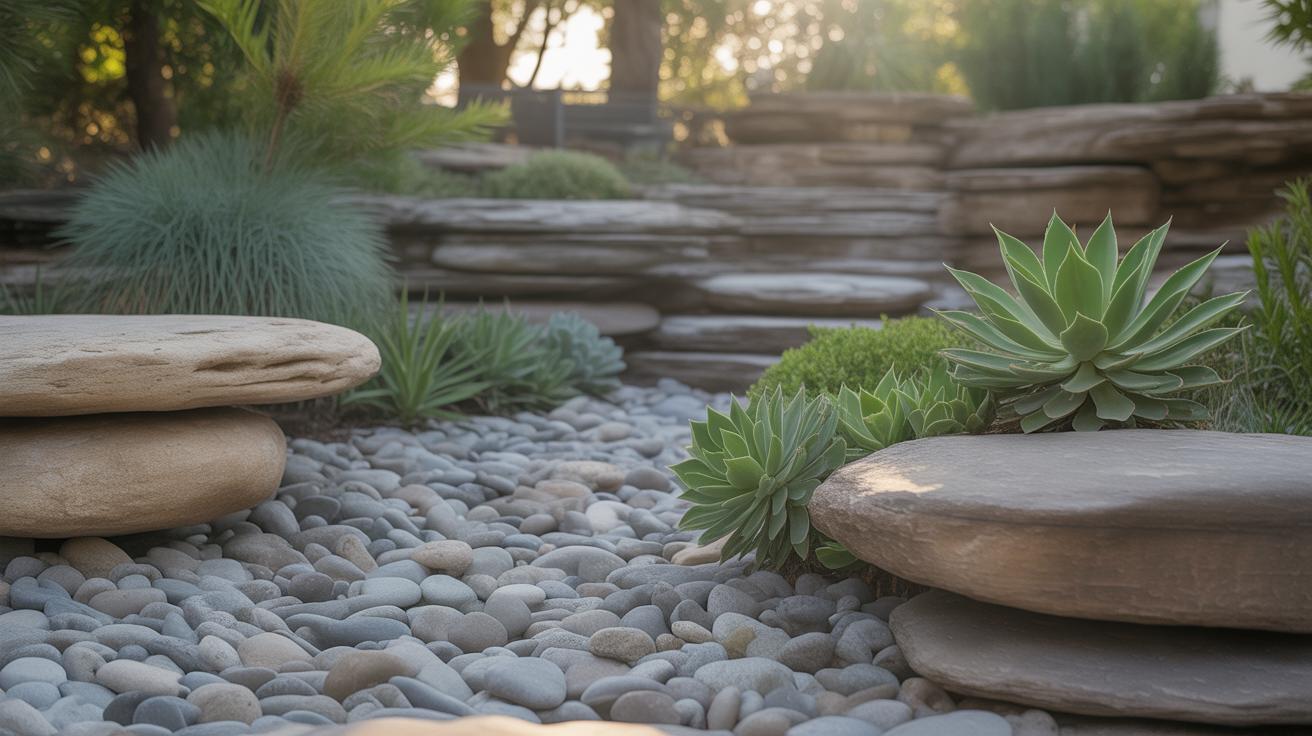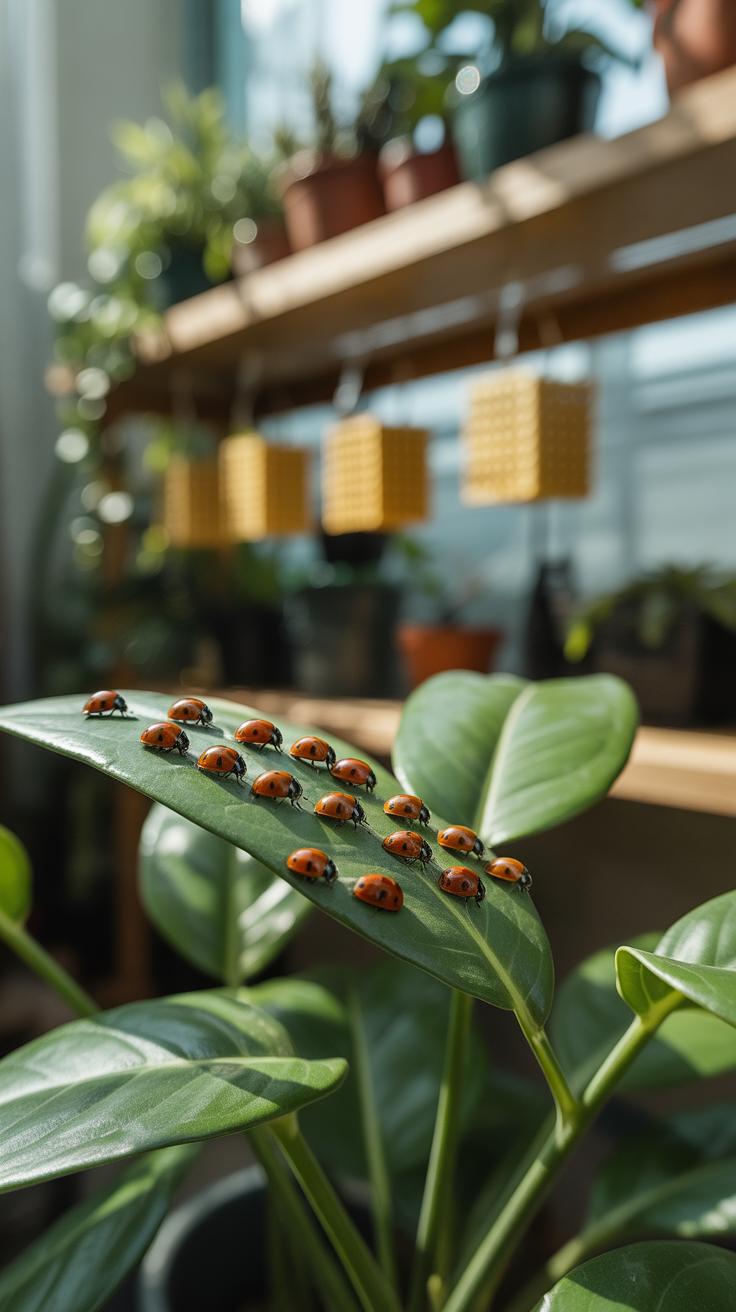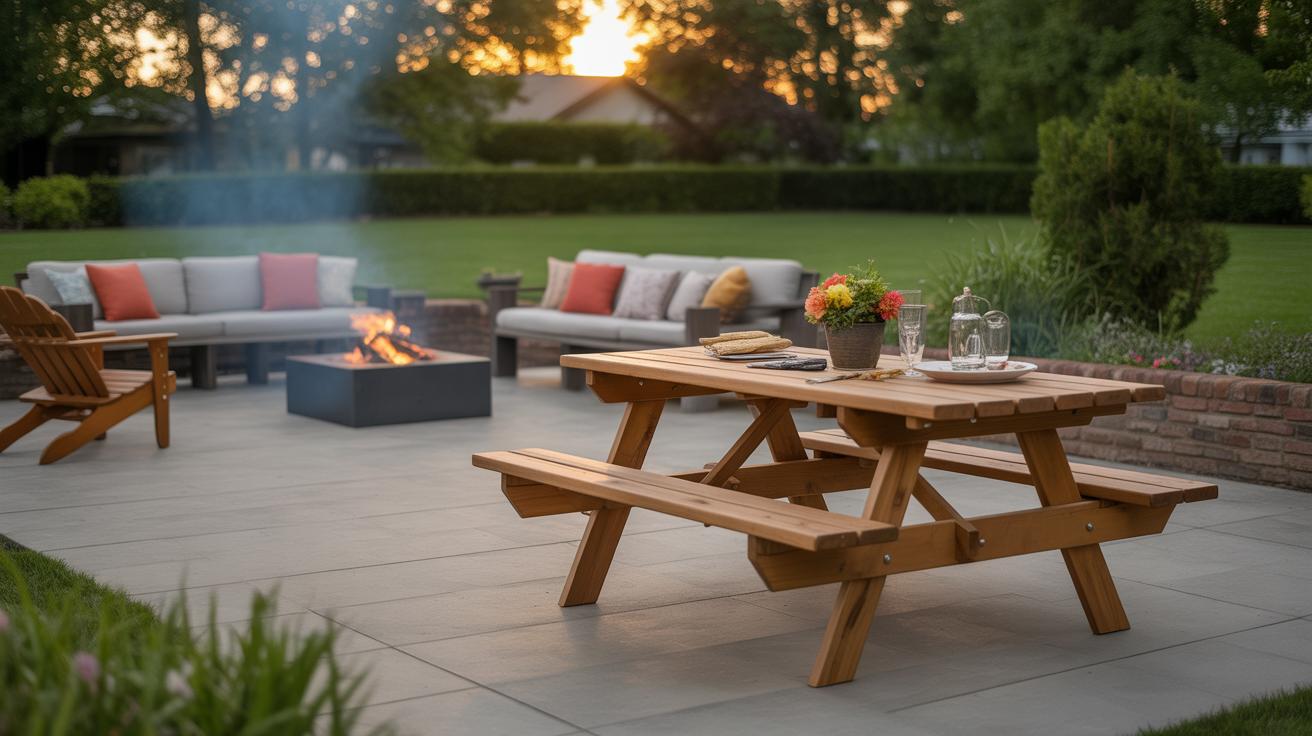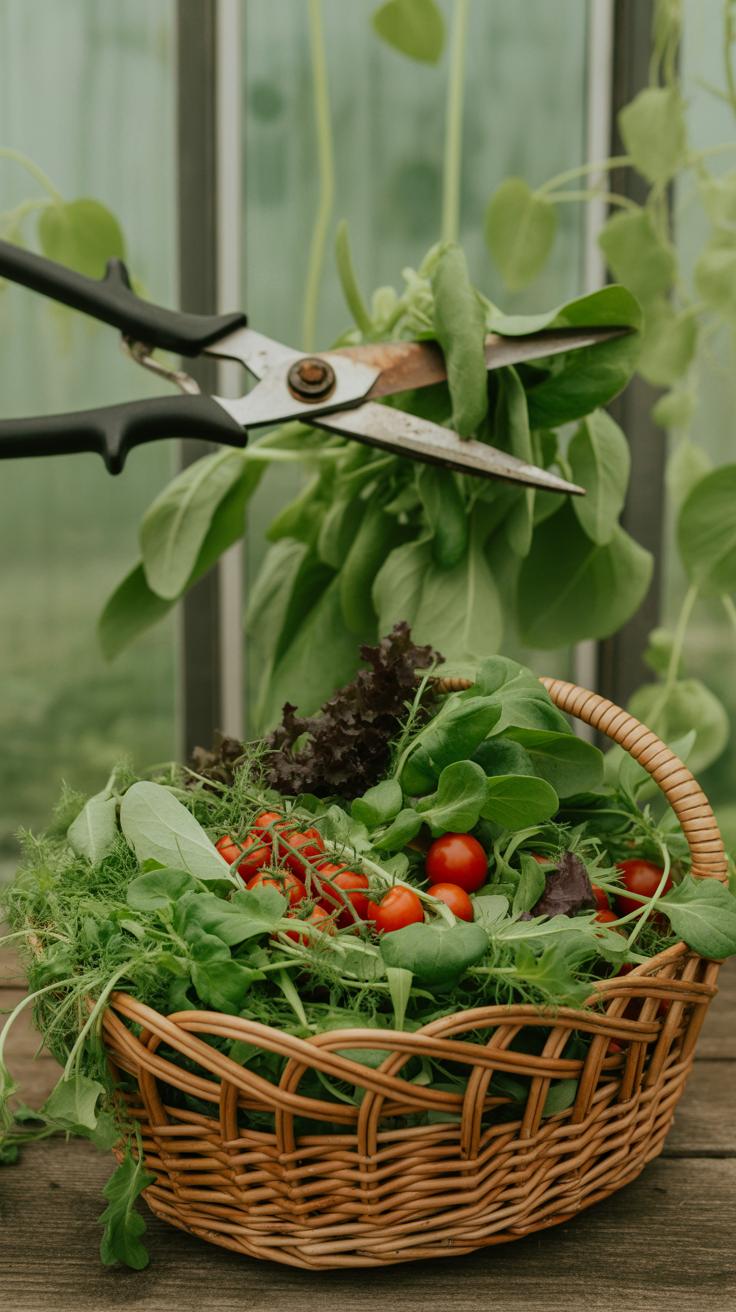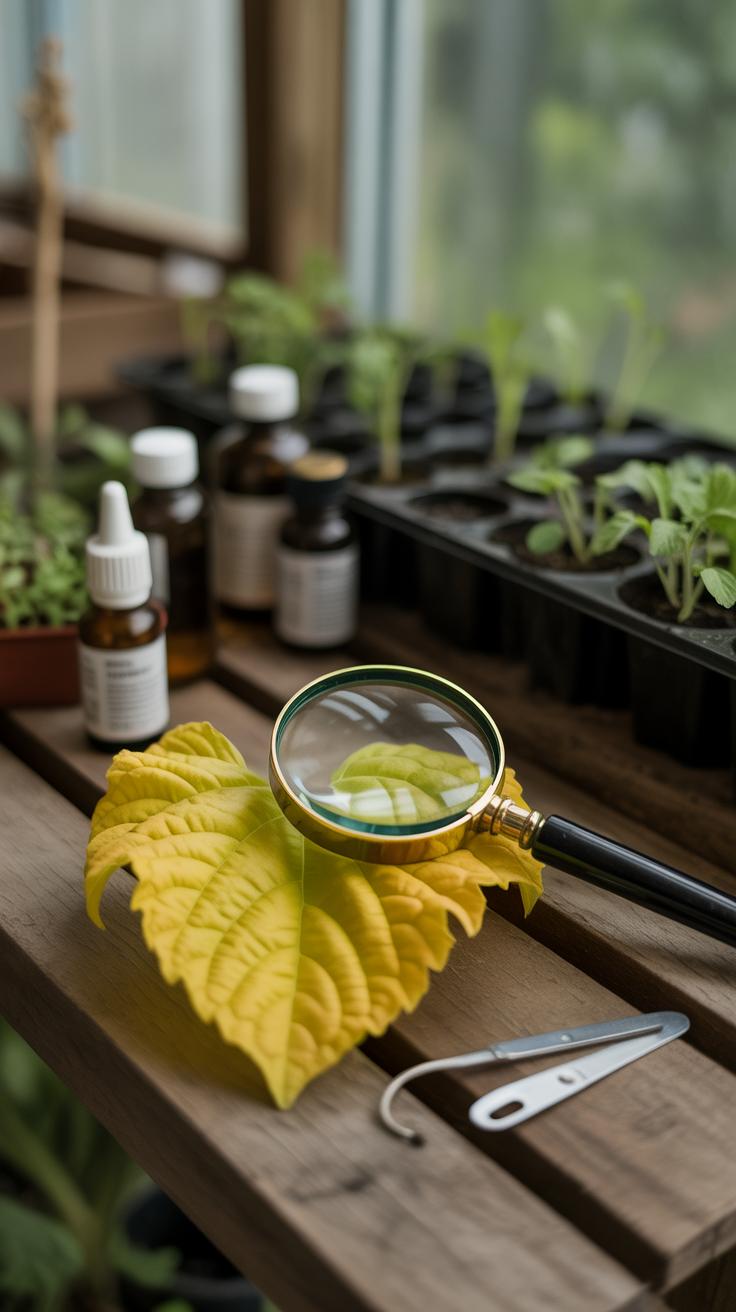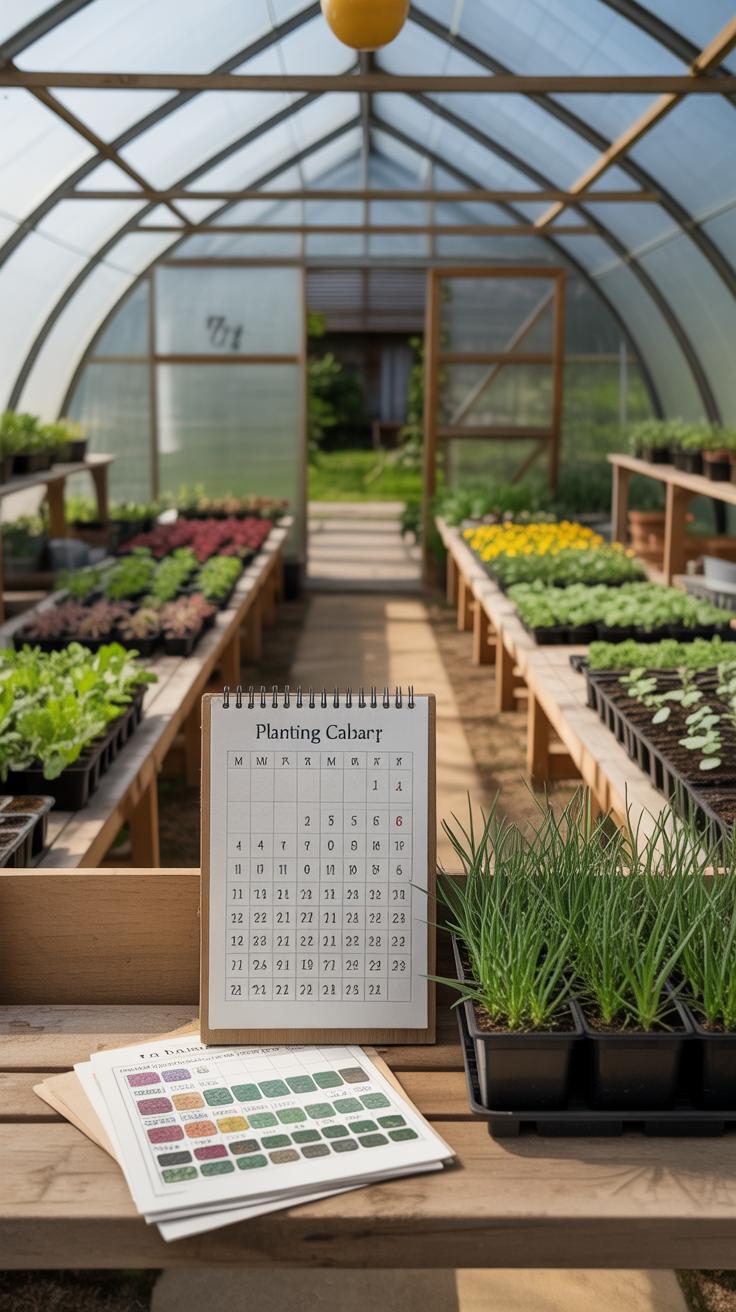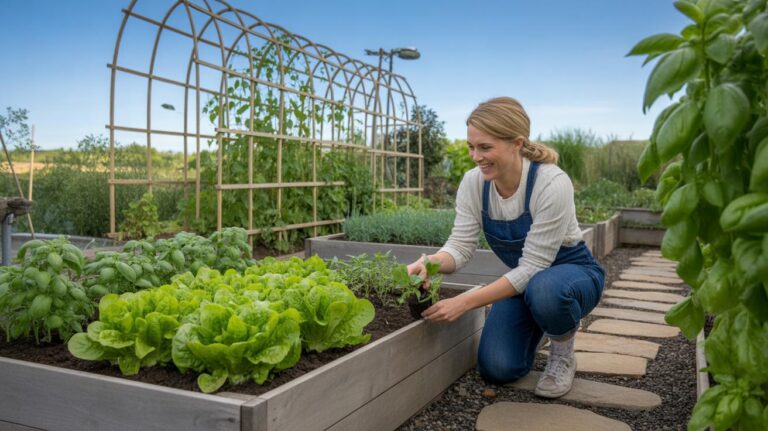Introduction
Year round greenhouse gardening is a rewarding way to grow plants regardless of the season. Whether you want fresh vegetables in winter or beautiful flowers in summer, a greenhouse protects your plants from harsh weather. This guide shares easy tips for beginners to start and maintain a greenhouse garden effectively.
You will learn how to choose the right greenhouse, set it up, control temperature and humidity, and care for your plants. Following this advice helps you enjoy gardening every month of the year, boosts plant health, and increases your harvest success. Let’s explore simple steps to create your thriving year-round greenhouse garden.
Understanding Greenhouses and Their Benefits
What Makes a Greenhouse Work
A greenhouse is basically a simple structure, often framed with metal or wood, covered by transparent panels like glass or plastic. These materials let sunlight in but keep warmer air trapped inside. This trapped warmth creates a mini climate controlled environment. It’s not magic; it’s just physics at work. The greenhouse slows down heat loss when the outside temperature drops, keeping plants cozy.
Inside, the temperature and humidity tend to stay steadier than outside. When sunlight penetrates the transparent walls or roof, it heats the interior surfaces. That warmth radiates back, and the glass or plastic panels reduce airflow, so the heat stays inside longer. This means your plants don’t have to deal with drastic swings in temperature or dryness.
Because of this control, you can use vents, heaters, or fans to tweak the environment further. Your plants get more consistent care, which is crucial, especially during cold snaps or rainy stretches. This small bubble of stability helps delicate seedlings survive when they might otherwise fail outdoors.
How Greenhouses Extend Growing Seasons
Greenhouses let you garden beyond typical outdoor limits. Imagine trying to grow tomatoes in early spring or late fall—usually too chilly, right? But inside a greenhouse, you can start your tomato seedlings weeks earlier and keep them producing long after they’d naturally die outside. That extra growing time is like gaining more daylight hours.
Leafy greens such as lettuce or spinach also benefit. They thrive in cooler but stable environments, so a greenhouse can protect them from frost while letting them grow throughout winter. If you’re interested in herbs like basil or parsley, a greenhouse might keep them flourishing when your friends’ outdoor herb patches go dormant.
But it’s not only extending seasons. You can attempt plants that would struggle in your region. Maybe you’re curious about peppers or eggplants that need warmth but don’t survive your winters. A greenhouse offers that chance—though, obviously, success depends on your care and climate control.
So, basically, a greenhouse isn’t just a shelter; it’s more like a tool for stretching what you can grow and when. It’s surprising how much this setup can reshape your gardening calendar and possibilities.
Choosing the Right Greenhouse for Your Garden
Greenhouse Materials and Sizes
Picking the right material for your greenhouse walls and roof can be a bit tricky. Glass, for example, lets in lots of light and looks nice, but it’s heavy and can break if you’re not careful. It usually costs more too, which might not suit a beginner’s budget. Then there’s polycarbonate, kind of a middle ground—it’s lighter, tougher, and still lets in plenty of sunlight, but it can yellow over time or get scratched.
Plastic coverings, like polyethylene film, are pretty cheap and easy to install. They won’t last as long, and you might need to replace them every few years. But if you think of it as a temporary setup or just want to test the waters, it could be good enough.
So, what matters most? Durability? How bright your plants need the light? Or just what fits your wallet? It’s a balancing act, really.
Sizing Your Greenhouse to Your Needs
Size depends a lot on where you want to place it and how many plants you plan to grow. A small, 6×8 foot greenhouse can work well on a balcony or a tight backyard. It’s manageable and won’t overwhelm your space. But if you’re thinking about growing a wider variety or larger quantities, you might want a bigger footprint—maybe 10×12 feet or more.
Keep in mind that larger greenhouses take more time and effort to heat and maintain. Sometimes, going a bit smaller saves you from feeling overwhelmed, especially as a beginner. You can always add shelving to maximize vertical space, too.
Have you thought about how much room you’ll realistically have? And how many plants you imagine tending during the colder months? Those questions help steer the size decision. Remember, it’s okay to start small and figure things out as you go.
Setting Up Your Greenhouse for Success
Finding the Best Location
Picking the right spot for your greenhouse isn’t just about finding an empty corner in your yard. You want to think about sunlight exposure first. Ideally, the greenhouse should face south or southeast to catch the morning sun and warm up quickly. But, well, if your property layout doesn’t allow it, you can make do with east or even west-facing spaces—though it may mean adjusting your plant choices.
Accessibility matters, too. You’ll be visiting your greenhouse frequently, so try to place it close enough that carrying tools, soil, or harvested produce won’t feel like a chore. Also, avoid spots shaded by large trees or buildings; too much shade kills potential growth. At the same time, watch out for very windy areas—you might want to add windbreaks if that’s your only option.
Drainage can be overlooked but is critical. If water pools around your greenhouse foundation, that’s bad news for plants and the structure. So, observe how water flows in your yard after a rain. You want the foundation on slightly elevated or well-draining ground.
Ensuring Proper Ventilation and Lighting
Ventilation often gets less attention than it deserves. Good airflow prevents mold, discourages pests, and helps plants breathe. You really want vents on opposite sides—top and side vents work well—to create cross-ventilation. Manual or automatic vent openers help maintain this without you needing to micro-manage daily changes.
Lighting makes a difference beyond just sunlight. On cloudy days or during short daylight months, supplemental artificial lighting can support plant growth. LEDs designed for horticulture are energy-friendly and effective. Position them so plants receive consistent light without overheating your greenhouse.
Don’t forget shading options, either. In summer, harsh sunlight through transparent panels can scorch plants. Shade cloths or screens can shield your garden from too much direct light. Balancing light and ventilation truly lays the groundwork for healthy plants from the start.
Controlling Temperature and Humidity in Your Greenhouse
Keeping the right temperature and humidity inside your greenhouse can sometimes feel like juggling. You want warmth enough for growth but not so much that plants suffer. For beginners, starting with a simple thermometer and a hygrometer is a solid choice. These tools help you keep an eye on conditions in real time—without guessing.
Using heaters generally comes into play when nights or colder days dip below what your plants can tolerate. Small electric heaters or propane options work well, but don’t just turn them on full blast. It’s better to use a thermostat with timers to avoid overheating or wasting energy. On warmer days, fans are your friends. Placing them near vents helps circulate air and cool things down. Too much fan use might dry out your plants, though, so watch carefully.
Humidity is trickier. Low humidity can slow growth, while too much invites mold or mildew. Check your hygrometer daily. If it’s too dry, misting leaves or setting open trays of water inside can add moisture. But if the air feels clammy, open vents or use a dehumidifier, if you have one. Sometimes, adjusting how often you water plants also changes humidity—overwatering indoors tends to raise it unexpectedly. Finding the balance can take a few tries, so don’t be discouraged if it’s not perfect right away.
Choosing Plants Suitable for Year Round Greenhouse Gardening
Picking the right plants for your greenhouse can be tricky. You want varieties that manage well with controlled conditions but also match your local climate and the seasons you experience.
For vegetables and herbs, think about those that grow quickly and handle varying light levels. Leafy greens like spinach, lettuce, and kale often do well year-round, especially since they don’t need too much heat or light. Herbs such as basil, parsley, and chives also thrive, but basil might struggle if the greenhouse stays too cool during winter. Tomatoes and peppers can be rewarding but require more warmth and attention.
Flower-wise, pansies, geraniums, and begonias often flourish in greenhouse settings throughout the year. While they add color, some flowers might slow down or become leggy without enough sunlight, so supplementing with grow lights could help. Orchids and fuchsias might feel a bit finicky but can be worth the effort if you don’t mind extra care.
You’ll find that plant choice isn’t always straightforward. Sometimes a plant thrives in spring but wanes in winter, even indoors. Matching plant needs with your greenhouse’s microenvironment—its sunlight exposure, humidity, and temperature control—is key. Start small, see what takes off, and adjust your selections with time.
Planting and Care Tips for Greenhouse Success
Preparing the right soil mix is more than just pouring dirt into pots. You want something well-draining but able to hold enough moisture. I usually mix equal parts of garden soil, compost, and a bit of sand or perlite to keep things airy. Too dense, and roots suffocate; too loose, and water vanishes. Choosing containers matters too—plants need space to spread roots without drowning in soggy soil. I tend to pick pots with good drainage holes and avoid those tiny starter trays for anything past seedlings.
Watering in a greenhouse isn’t the same as outdoors—you don’t get as much rain, but evaporation rates can be high, especially in warm months. Check soil moisture daily and water deeply but not too often to encourage strong roots. Feeding schedules can vary with plant types, but a good rule is every two weeks using a balanced liquid fertilizer. If you go too heavy on feeding, plants might grow fast but get weak or pest-prone.
Here’s a simple routine that works well:
- Every morning: Inspect plants for dryness, water if soil is dry about an inch below surface.
- Weekly: Light feeding with a diluted fertilizer; watch for any leaf yellowing or spotting.
- Monthly: Flush pots with water to prevent salt build-up from fertilizers.
Sometimes I catch myself wondering—am I watering enough or too much? The trick is watching the plants closely and adjusting, because each greenhouse has its quirks. It’s trial and error but rewarding when you get it right.
Managing Pests and Diseases Naturally in Your Greenhouse
Keeping pests and diseases under control in a greenhouse can feel like a constant challenge. Some common offenders tend to appear more often than you might expect. Think about aphids, whiteflies, spider mites, and fungus gnats—they love the warm, humid environment your greenhouse provides. Early signs you might notice include sticky residue on leaves, tiny webbing, or leaves that suddenly look spotted or curled.
Identifying these pests early can save a lot of trouble. For example, aphids cluster on new growth and leave behind a shiny, sticky substance. Spider mites are tricky; you might only spot their fine webs if you look closely. Awareness is half the battle. But what about tackling them without turning to chemicals?
Natural pest control uses some straightforward yet effective methods that, well, don’t stress the ecosystem inside your greenhouse. Try introducing beneficial insects like ladybugs or predatory mites—they hunt down pests quietly. Neem oil sprays also work well against many common pests and are quite gentle on plants. Regularly washing leaves with water or a mild soap solution can physically remove pests, too. Sometimes just good airflow and trimming overcrowded plants reduce pest-friendly hiding places.
Are you using soil or potting mix you trust? Because contaminated soil can invite pests and diseases. Consider crop rotation inside the greenhouse, even though it sounds tricky in small spaces.
Honestly, it’s a balance between observation and intervention. Too often, people wait until damage is obvious. But with frequent checks and these natural steps, you can keep your plants healthier—and your pesticide shelf empty.
Harvesting and Using Your Greenhouse Produce
Timing Your Harvest
Knowing when to pick your vegetables, herbs, and flowers can make a big difference in taste and how long they last. For most vegetables, like tomatoes and peppers, wait until they show full color and feel firm but a bit soft to the touch. Picking too early often means they’ll lack flavor, but wait too long and they can get mushy or overly ripe.
Herbs usually taste best just before flowering—this is when their essential oils are strongest. If you wait too long, those oils fade. Flowers, on the other hand, should be cut when buds start to open but haven’t fully bloomed yet. Picking at this stage helps them last longer in a vase.
Sometimes it’s tricky. For example, leafy greens may bolt unexpectedly, signaling it’s time to harvest quickly before they become bitter. It’s part art, part science and, honestly, a little trial and error.
Storing and Using Fresh Produce
Freshness fades fast, so how you store your picks matters. Leafy greens and herbs can stay lively if you wrap them loosely in a damp cloth and keep them in the fridge. Root veggies like carrots or radishes do better in cool, dark places—think a simple box in a cooler part of your home.
Tomatoes? They prefer room temperature, away from direct sunlight, to keep their flavor intact. And if you ever find you have more than you can eat, freezing herbs in ice cubes or quickly blanching veggies for the freezer works well.
Using your harvest soon after picking means flavors shine brightest. Try fresh salads, simple sautés, or infuse herbs into oils and vinegars for longer enjoyment. Sometimes, just eating a sun-ripened tomato straight from the vine is unbeatable—if you’re lucky enough to time it right.
Troubleshooting Common Greenhouse Problems
Dealing with Temperature Fluctuations
Temperature swings can be tricky in a greenhouse. On some days, it might get too hot in the afternoon, causing wilting or leaf scorch. Other times, cold snaps at night stunt growth or cause plants to look droopy. Spotting these issues early helps a lot. Look for leaves curling or turning yellow—signs your plants aren’t happy with the heat or cold.
To fix this, try shading your greenhouse during hot spells. You can use shade cloth or even a light whitewash. Ventilation also plays a huge role; opening vents or doors lets hot air escape and fresh air come in. At cold times, add a portable heater or insulate with bubble wrap on the walls. Sometimes, a simple thermostat-controlled fan can stabilize temperatures better than guessing when to open or close vents.
Preventing Mold and Mildew
Fungal problems like mold and mildew often show up if your greenhouse feels damp or stuffy. You might see fuzzy patches on leaves or powdery spots that slowly spread. These pests love high humidity and stagnant air.
To keep them at bay, focus on good airflow first. Use fans or open multiple vents to let air circulate. Avoid overhead watering; instead, water soil directly early in the day so moisture dries quicker. Overcrowding plants can also trap humidity, so leave enough space between them.
Occasionally, I’ve found wiping down surfaces and removing fallen leaves stops mold before it takes hold. Spot-treating with natural fungicides like neem oil works too, but stopping moisture buildup is really where you gain the upper hand.
Planning Your Greenhouse Garden for Continuous Growth
Keeping your greenhouse full throughout the year means thinking ahead about what to plant and when. You’ll want a plan that avoids leaving empty space but also gives plants room to grow. I find that planning around crop rotation helps avoid soil fatigue and keeps pests in check. For example, rotating leafy greens with root vegetables or legumes can balance nutrients in the soil and reduce disease risks.
Creating a planting calendar really helps. Write down when you start seeds, transplant seedlings, and expect harvests. This way, you can layer plantings to overlap growth cycles. Sometimes I’ve juggled winter lettuce with early spring tomatoes this way, so something’s always coming up. The calendar doesn’t need to be perfect, but it guides your timing and planning.
Seasonal adjustments matter too. During colder months, focus on plants that handle lower light and temperatures, like kale or Swiss chard. In warmer months, switch to heat-loving crops like cucumbers or peppers. Adjusting watering and ventilation comes with that change, too—sometimes I forget and plants get stressed. Your choices might shift as you learn what thrives or struggles in your particular greenhouse setup.
Conclusions
Greenhouse gardening allows you to extend your growing season and protect plants in any weather. By selecting the right structure, managing light, temperature, and moisture, and choosing suitable plants, you create a reliable space for gardening throughout the year. Regular care and observation keep your garden healthy and productive.
Use these tips to start your greenhouse journey confidently. Your plants will thank you with fresh, homegrown fruits, vegetables, and flowers no matter the season. Greenhouse gardening makes fresh food and beautiful plants accessible every day.

